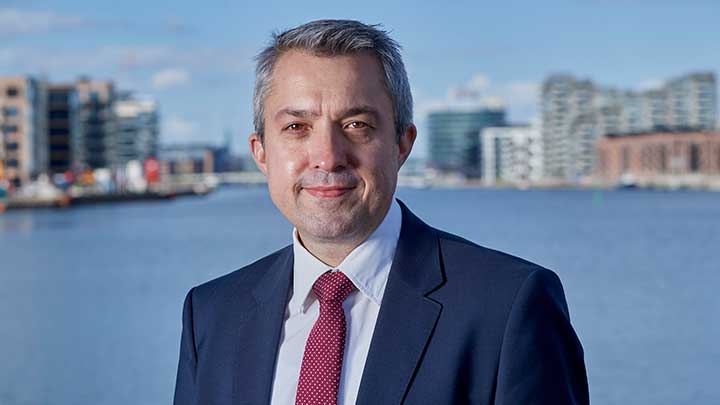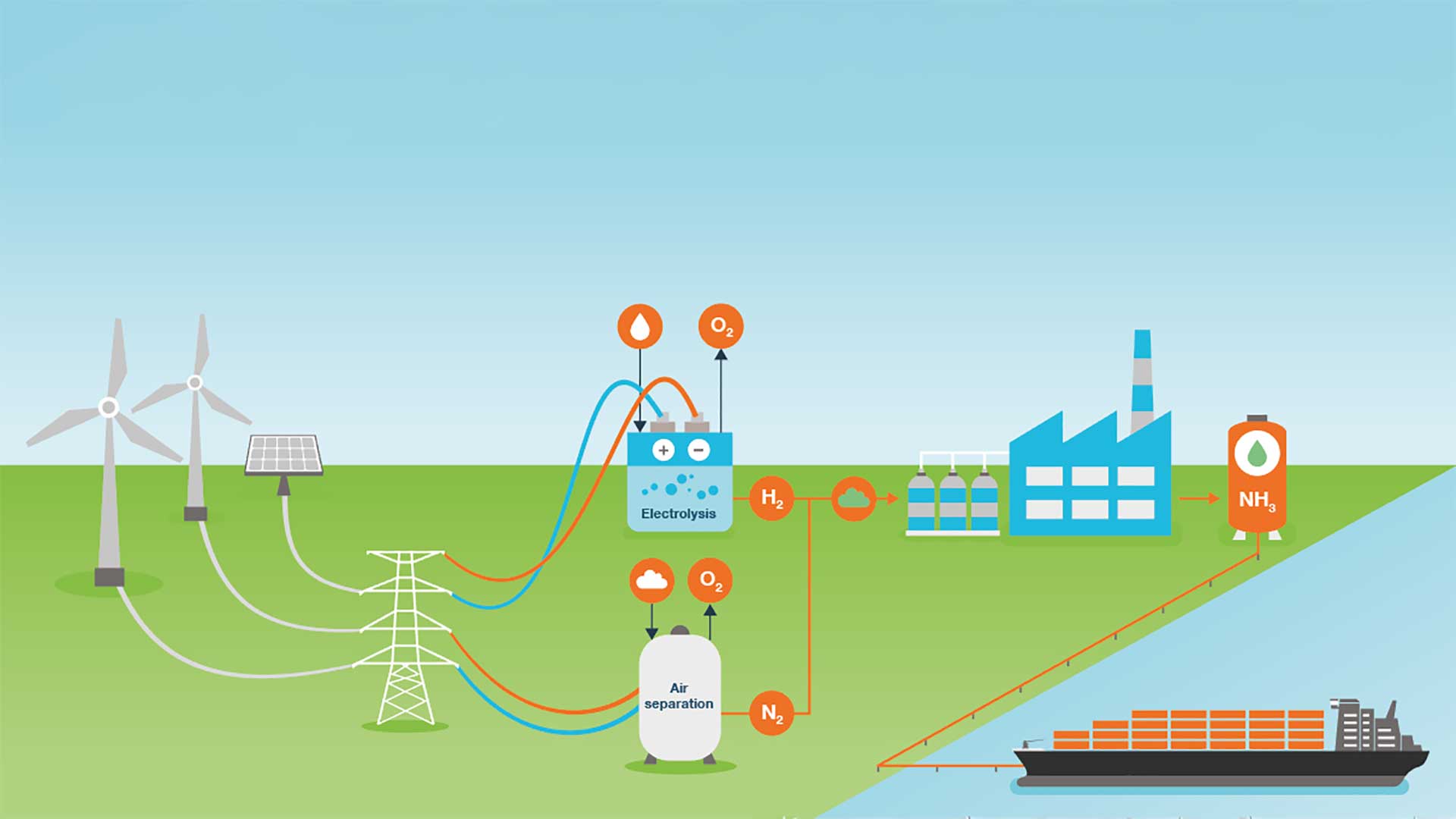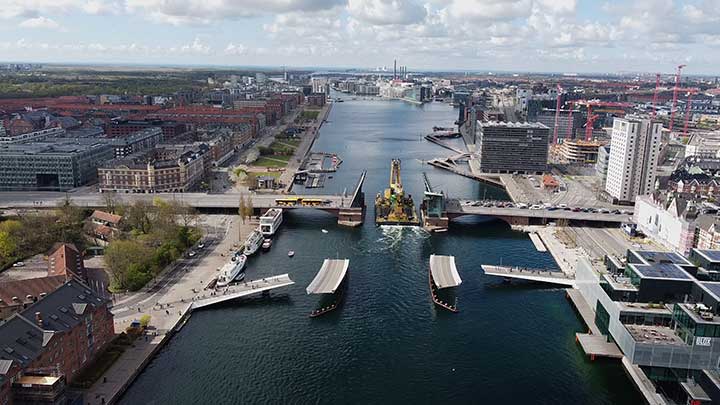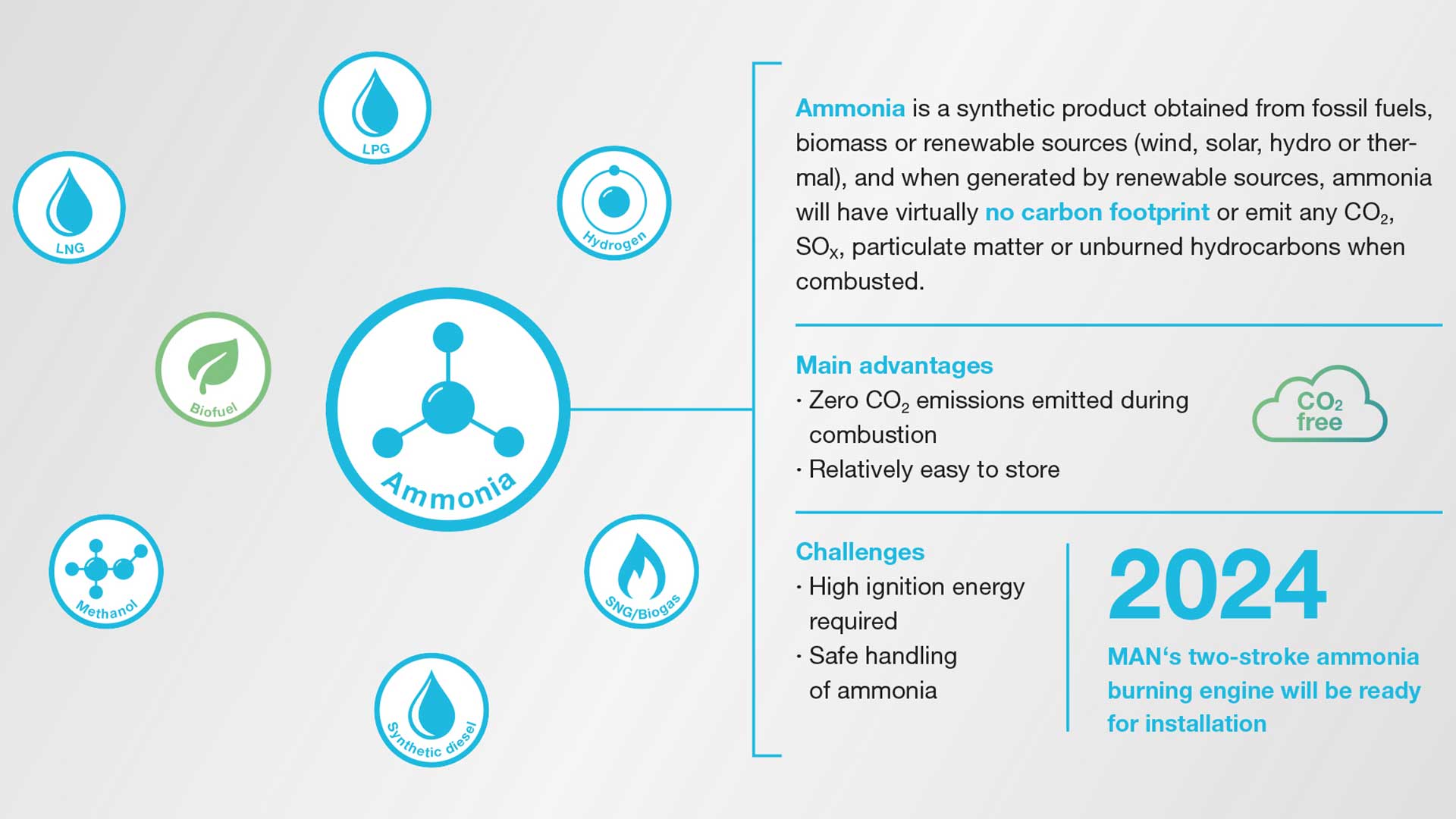MAN Energy Solutions is developing a fuel-flexible, two-stroke ammonia engine as a key technology in the maritime energy transition
Green ammonia is among several synthetic fuels key to establishing a greener shipping industry in the near future. MAN Energy Solutions aims to have a commercially available two-stroke ammonia engine by as early as 2024, followed by a retrofit package for the gradual rebuild of existing maritime vessels by 2025.
By Nils Lindstrand
”Today we have a chance to change the shipping industry and its environmental impact on a global scale,” says Brian Østergaard Sørensen. A sailor who once taught thermodynamics, you can certainly argue that he has a suitable background for the task. Before receiving a degree in mechanical engineering from the Technical University of Denmark, Østergaard Sørensen had already earned the highest seafarer qualification – master mariner – allowing him to serve as shipmaster on any merchant ship anywhere in the world.
“Now I’ve found my place in the machine industry at MAN Energy Solutions,” he says, where as Head of Two-Stroke Research and Development he and his team at the Research Center Copenhagen (RCC) are working on flexible fuel solutions that will allow engines to burn a broad variety of environment-friendly fuels, including methanol and ammonia. The company already aims to have a two-stroke ammonia engine for large-scale container ships available by 2024, and a year later a retrofit package to make existing ships capable of running on ammonia as well.
“This is obviously an ambitious undertaking,” says Østergaard Sørensen. “2024 is a tough deadline, but we can meet it. The industry is already on board and working intensively with us towards greener maritime shipping.”

Brian Østergaard Sørensen is Head of R&D Two-Stroke Businesses at MAN Energy Solutions in Copenhagen, where the company is developing a number of future carbon-free fuel solutions for the shipping industry.
The final goal for two-stroke engines is to run them entirely on carbon-neutral and carbon-free fuels.
The need for flexible fuel solutions

Green ammonia can be produced from renewable energies and is therefore a carbon-free shipping fuel.
According to the International Maritime Organization (IMO), maritime shipping emits around 940 million tons of carbon dioxide (CO2) per year and is responsible for around 2.5 percent of all greenhouse gas (GHG) emissions. Without mitigation, emissions
are projected to grow by at least 50 percent over the next three decades, which is why the IMO has adopted mandatory measures to reduce 70 percent of emissions from ships by 2050 and eventually phase them entirely out within this century.
Ammonia has unquestionable advantages that could help create a sustainable maritime shipping industry. It can literary be produced from air and sunshine – and it’s carbon-free. Moreover, as with methanol, solutions using ammonia build on established technologies and infrastructure, making the road to sustainability much shorter. However, it will take time to build capacity – and time to rebuild ships’ two-stroke engines to run on ammonia. “The interest from shipping companies in new fuel technologies is huge today, and we already have a number of collaborations running. But the conversion to green engines also depends on economic realities.” Østergaard Sørensen adds: “No shipping company can risk having its fleet stranded during the transition, which is why we need to create flexible solutions that allow a transition by degrees.”
Safety first: double walls and clean combustion
The development of such solutions isn’t without challenges. Østergaard Sørensen points out that ammonia is a toxic and potentially corrosive chemical: “So we’re currently focusing R&D in the creation of a complete system
from fuel tank to engine, making trials with double walls, using different materials solutions, developing smart software and finding the optimal process solutions.” The process also has to be designed right to avoid emitting nitrous oxide
(N2O) or “laughing gas” into the air. “But the issue can be solved,” says Østergaard Sørensen. “We’re already working on a number of options to develop the most efficient solution.”
Fuel suppliers also have a favorable attitude towards newer, cleaner fuels. “Today, what we used to consider oil companies are really energy companies that work in every part of the energy market. And they recognize that these synthetic fuels are a new and growing business opportunity,” says Østergaard Sørensen. “However, the cost for ammonia might be a negative factor to begin with, so we’ll need a combination of legislation and customer pressure to tip the scale.”
"We need to act now"
Even though an important part of the work is taking place at the Research Center Copenhagen where they are building and testing the two-stroke ammonia engine, MAN Energy Solutions is far from alone in this development. A major step is also being made in the form of the Mærsk Mc-Kinney Møller Center for Zero Carbon Shipping, a non-profit research and development center of which MAN Energy Solutions is a co-founder. So, today maritime engineers like Sørensen are deeply committed, engaged in a challenging task and taking on the worthy cause of transforming the shipping industry into a green business. But the clock is ticking. “2050 is just one ship lifecycle away,” says Østergaard Sørensen, “If we want to reach IMO goals we need to act now.”
Liquefied natural gas (LNG) has already given shipping a much better alternative for the foreseeable future, but synthetic fuels like ammonia from renewable energy will be needed to meet the GHG reduction goals of the IMO and the larger goals of the Paris Agreement to keep the increase in global average temperature to below 2 °C above pre-industrial levels. Østergaard Sørensen and his colleagues at MAN Energy Solutions believe ammonia-fueled engines to be an important solution for two-stroke engines, with large tankers and bulk carriers being early adaptors.

A two-stroke engine on its way to be reconfigured for ammonia at the MAN Energy Solutions’ Research Center in Copenhagen.

Ammonia and other future fuels are key towards green shipping.
About the author
Nils Lindstrand is a business and technology writer based in Stockholm, Sweden. His work has been published in a number of Swedish and international magazines.
Explore more topics
MAN Energy Solutions is now Everllence.
We have adopted a new brand name and moved to a new domain: www.everllence.com. This page will also be relocated there shortly. We are working on shifting all pages to www.everllence.com.
